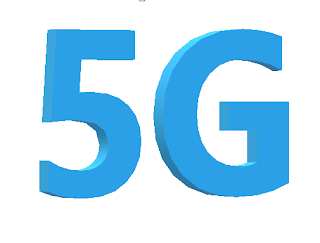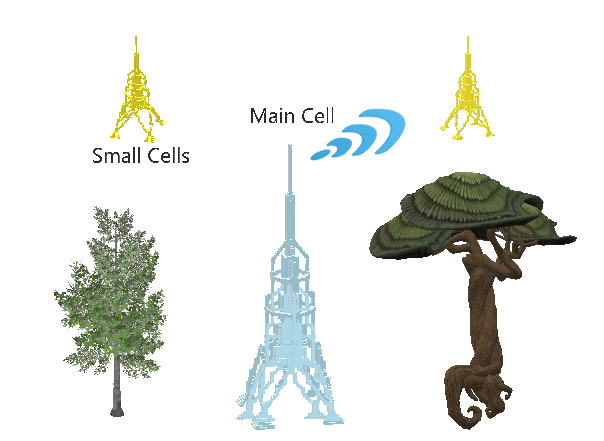5G - The Next Big Deal!
5G - The Next Big Deal!
The world is blessed with the bliss of 4G networks. Today Internet is our grasp faster than ever. Today we browse Google, post on Facebook,Twitter, scroll in Wikipedia, watch in Youtube, Netflix, Amazon and upload pics in Instagram more quickly than before. Digital payments are not a fact of concern because of 4G networks and the providers. But it is not the end of the Speed limit it can reach. Data communication can reach further speed and agility. In the growing era of digital communication and data transfer we are about to meet a new generation of Networks - The 5th Generation(5G).
It is really a big thing to talk about. The 5G will come with a brilliant number of possibilities and opportunities. Not just the Telecom industry but the end users will also enjoy its benefits. I have listed a few properties of this upcoming beast for information.
- Speed :- 4G serves a speed of average 20 MbPS download and 10 MbPS upload speed. It is not a bad speed. But many tech experts claim that 5G will reach 300 MbPS to 10 terabits of speed theoretically. In other words 5G will be 10 times even 20 times more faster that 4G. This speed will significantly reduce the time in data communication.
- Bandwidth :- Bandwidth of 5G will be larger than 4G. More BW means more user connectivity and smooth service. Verizon open a service on 5G in U.S with limited number of base stations with 400 GHz of wave spectrum(4G has 3.7 GHz of spectrum). This network was capable to reach a speed of 80 to 900 MBPS download speed. It is clear enough that how incredible will it be.
- Latency :- Latency is basically a term used in data accessing. You often see people saying that a video is lagging - it means the latency of retrieving the data is high for which it is failing to show you the video. In 5G latency will be a few milliseconds. So say Good bye to Laggs.
The 5 basic pillars of 5G are -
- Millimeter waves
- Small cells
- Massive MIMO
- Beamforming
- Full Duplex
- Millimeter waves :- The most important drawback of 4G network is the amount of traffic it is handling everywhere and every-time. Every smartphone, Telecom services, routers, servers is connected to the 4G network. In the awakening of Internet of Things(IOT), Artificial Intelligence, Machine Learning and Cloud Computing etc. the network of only 3.7 GHz is failing to manage them all together.
For example, in a 12*14 feet room 30 people have gathered. So there is no way to stand or even enter in the room, But if you expand the room to 12*140, then there is enough space available for more than 25 people and traffic is reduced. That's why Experts are thinking to operate 5G in 300-400 GHz spectrum range. So that all technologies work smoothly and give beneficial results. Millimeter waves are the technique used in Radar and Satellite communication. In the past mobile devices also used this method. But one drawback of this method is - they can't be easily tracked. They sometimes get absorbed by buildings, trees, and even rains.
- Small Cells :- Small cells are the basic idea to reduce the drawback effects of millimeter waves. Small cells are portable miniature base stations that require minimal power to operate and can be placed every 250 meters or so through out cities. For the prevention of network or data signal drops these Small cells can be installed in the carriers/towers to get a dense network of 5G network.
This dense networks can work as a relay team to send and receive valuable data and information to the end-users. 5G requires a big infrastructure but use of small cells have a exceptional advantage of small antennas causing less power consumption. They are also capable of transmitting millimeter waves, giving accuracy to the network. But it is hard to implement in rural areas. Because this large infrastructure of small cells may require a lot of money and environment.Small Cell Demonstration - Massive MIMO :- The 3rd pillar of 5G is massive MIMO or Multiple-In-Multiple-Out infrastructure. Today 4G stations have a dozen of ports for antennas that handle all cellular traffic: 8 for transmitters and 4 for receivers.But 5G networks claim to support about a hundred ports which many more antennas can fill a single array.
It offers 5G to serve more users ,at the same time reduce network traffics.This technology is called MIMO. Massive MIMO take the mark to another level by increasing number of antennas. Massive MIMO looks promising but installing so many more antennas to handle cellular traffic may cause more interference if those signals cross. That's why 5G requires Beamforming.
MIMO Station - Beamforming :- Beamforming is cellular traffic control system. In Massive MIMO there is always a possibility of overlapping or collision of same frequency signals. To avoid this collision Beamforming is the primary action. Consider it like this, Two Trains are leaving and arriving at a station but the catch is they are on the same track. So there will be accident. To prevent this we can separate the incoming trains by changing the train line.
In Signalling term change the frequency of two different colliding signals(say 200 GHz) in different frequencies(200 & 220 GHz). In this way the aliasing occurrence of a signal is prevented.
BEAMFORMING - Full Duplex :- Consider a scenario that two people are talking in exact same frequency signal. In that case we need a way to give parallel communication between two users. Full duplex is a terminology in which we say signals are transferred in a clocked way. It means a synchronization process between the two signals with same frequency. It is equivalent to Time Division Multiplexing. For an example 1st signal is transferred in .25 seconds and the other one in next .25 seconds.
Self-driving cars will also gain accuracy and smoothness in connectivity. As these cars need high speed network to rapidly and continuously share data across sensors and calculate the scenarios in the blink of an eye. Algorithms need the speed to get the dataset and calculate the next move of the car in real life in an instant.
With 5G Video Streaming and watching will be on top scale. Today & tomorrow Youtube community grows to create a benchmark in Video and media aspects.
5G will help in improvement of cloud and Distributed Memory technologies. As in 2019(This year) Google announced about STADIA , a concept of Cloud gaming platform to stream and play Games in a server.
Smartphones will become more advance in terms of data communication and sharing. Already some concept phones have been launched like Huawei Mate X,Samsung Galaxy Fold, OnePlus 7 pro, Vivo Apex 2019 etc.
So there are lots of promises as well as challenges. Experts are facing the challenges continuously and experiments are done everyday to give us a better future of unparalleled innovations and discoveries. We hope to get a Faster, Smoother and Healthy Network in our community and Society.



Comments
Post a Comment